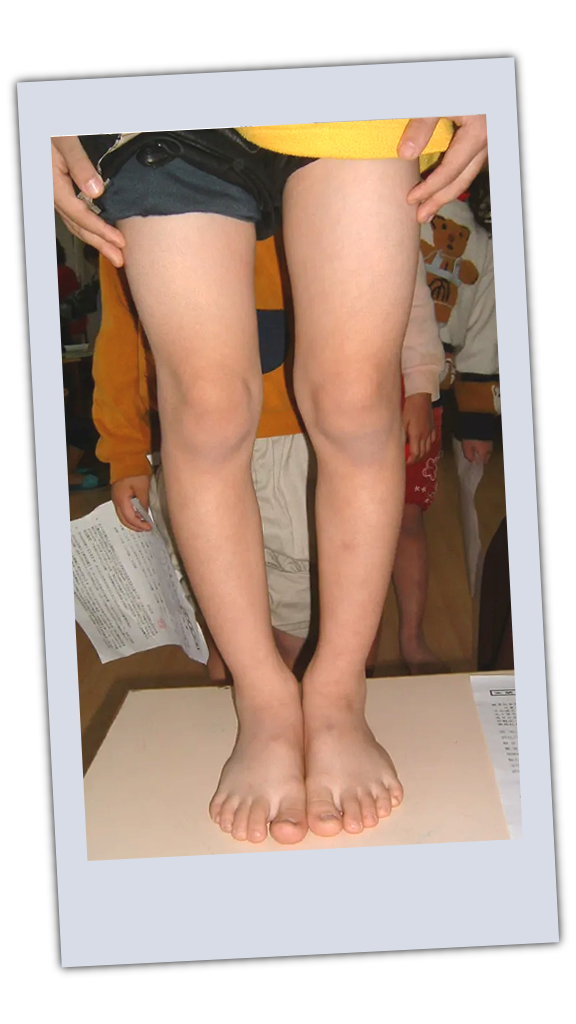

BOWLEGS
People who have a gap between their knees while their feet are close together in a standing position have what is known as bowlegs.
Bowlegs, also known as genu varum, are normally seen in a child’s development, usually occurring from around birth to 1½ year old.
KNOCK KNEES
People who have a gap between their feet while their knees are close together in a standing position have what is known as knock knees.
Knock knees, also known as genu valgum, is also normal in a child’s development, usually occurring from around 2½ years old. Children usually outgrow knock knees as their legs start straightening when they are around 4-6 years old. By the time they reach around 8-10 years old, their leg alignments would likely last them into adulthood.
However, improper development may cause a child to retain knock knees.

CAUSES
Bowlegs
As previously mentioned, bowlegs are normal in infants. Because of the cramped space within the womb, infants are usually born with bowlegs. However, if the condition persists even as the child ages, the bowlegs may have one of the following causes:
- Vitamin D and calcium deficiency
- Dwarfism
- Improper healing of bone fractures
- Lead poisoning
- Blount’s disease
- Paget’s disease
- Bone dysplasia
- Fluoride poisoning
As previously mentioned, knock knees are common in healthy children between the ages of 2 to 7 and part of a normal development. However, knock knees that don’t improve may have one of the following causes:
- Vitamin D and calcium deficiency
- Injury
- Genetic condition
- Excessive pressure on the knees
- Infection
- Osteoarthritis
- Rheumatoid arthritis
Potential Problems
If the child does not outgrow bowlegs or knock knees, the condition may cause limitations in physical activities, such as pain or instability. As a result, children with bowlegs may frequently fall or have trouble squatting. Children with knock knees may experience loose joints and flat feet. They may also show a preference for W-sitting.
More severe cases of bow legs and knock knees can also place more stress on the knees, which in turn increases the risk of arthritis. Bowlegs may also cause the child to walk with more pressure along the outer edges of their feet, while knock knees may cause them to walk with more pressure along the inner edges of their feet.
Treatment
Most cases of bowlegs and knock knees in children do not require treatment, as the legs will straighten on their own as the children develop. However, if your child has bowlegs after 2, knock knees before 2 or after 7, has other underlying conditions, or has serious symptoms, treatment may be in order.
Increasing vitamin D and calcium intake would prevent rickets, which in turn would reduce the likelihood of developing bowlegs and knock knees.
※ Customized shoes and insoles with proper arch supports are designed to help adjust children’s feet and legs back into straight positions. For the most effective treatment, combine the assistive footwear with exercise.

